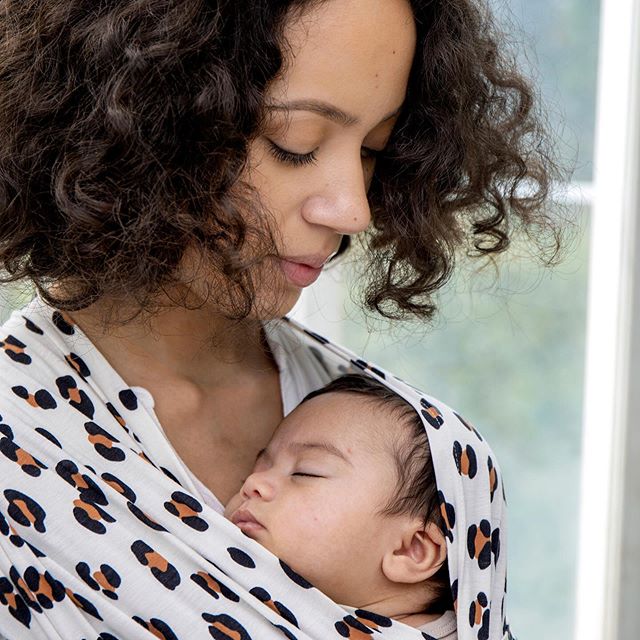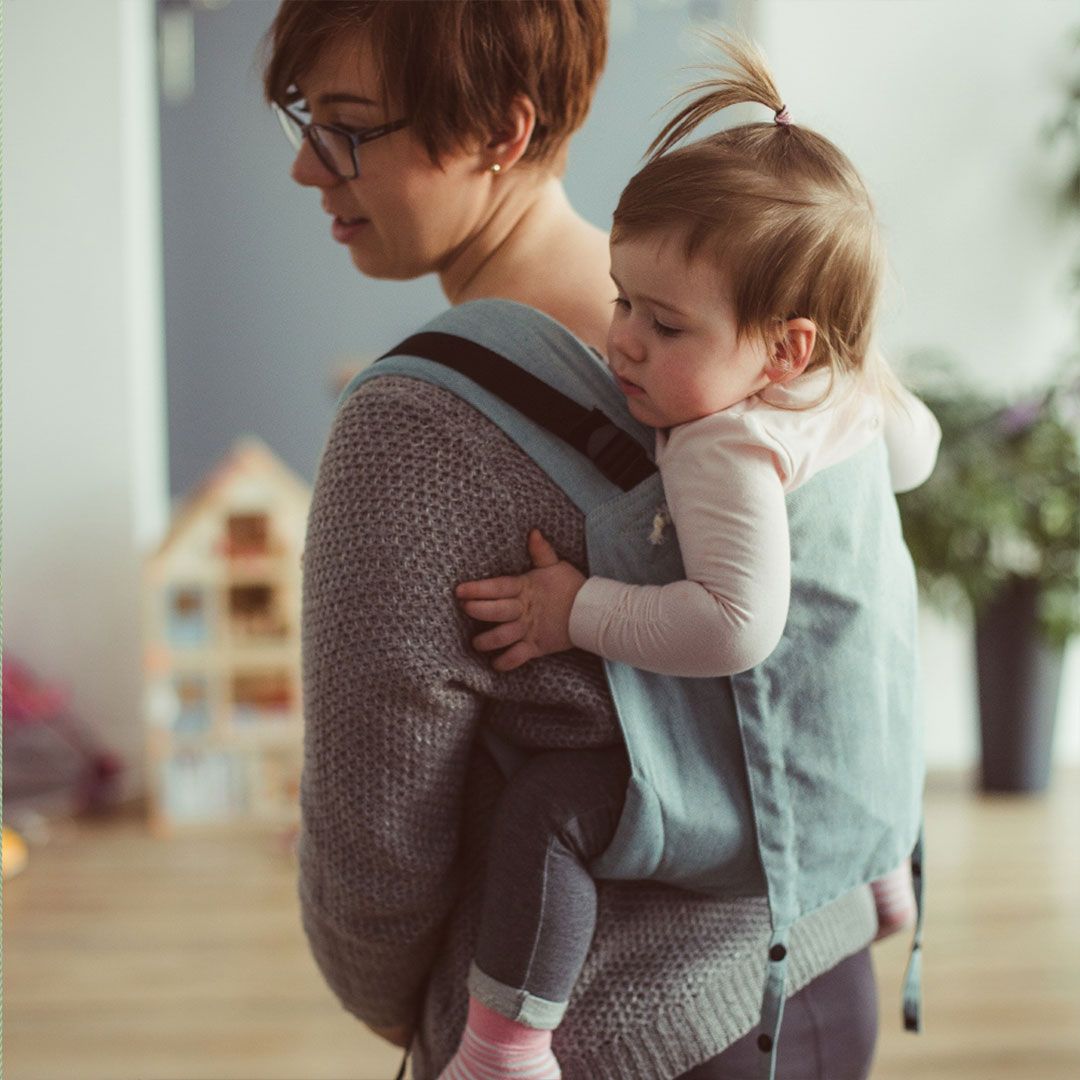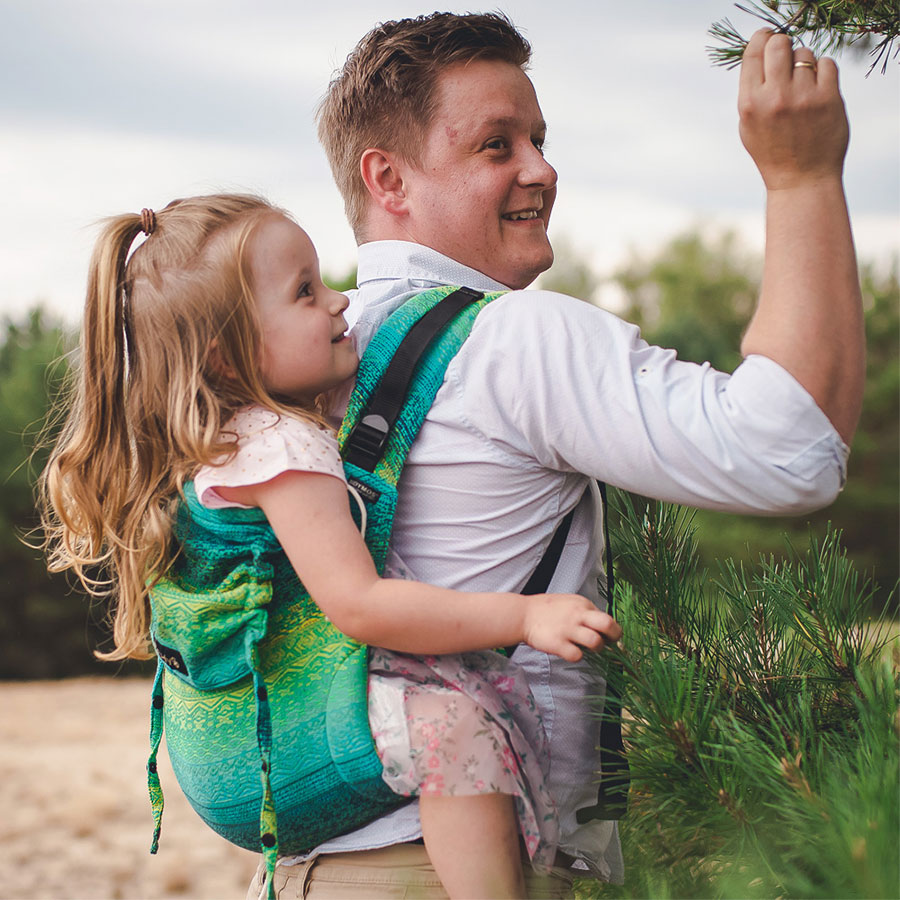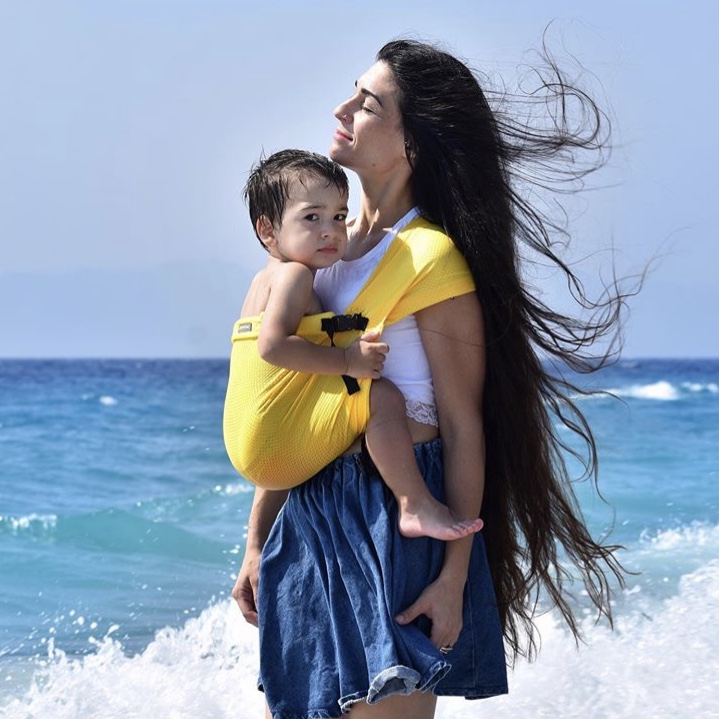by Beth Beaney, Executive Babywearing Consultant at LTBN

Babies and parents alike need physical contact right after birth, and the need doesn't stop there. One of the most natural, affirming ways to deepen your relationship with your child is to carry them in a sling.
Carrying your baby brings a plethora of benefits for you and your young child. But how do you know when the time has come to stop?
Every child is different, which means that there's no age that every parent should stop carrying their baby. But as a parent, it helps to know what to look for and think about when you're making this decision.
Parents are often anxious that if they carry their child for too long, their child will fail to develop independence. Actually, parents say that they find that the opposite is true. Frequent child-carrying didn't stunt their child's development at all; in fact, their babies grew up to be independent, energetic, exploratory children.
If you want to make an informed, child-centred decision about when to stop carrying, read on. This guide will explain the pros and cons of conventional wisdom about the right time to stop carrying. Most importantly, it will cover everything you need to know to feel confident in your decision for you and your child.
Right Time, Right Reason
As many parents know, carrying a baby in a sling isn't just for practicality. Studies have shown that babies who are carried more cry less. And mums and dads love the closeness of baby slings too.
And it makes sense - for a newborn who has just spent nine months sharing every heartbeat and breath with you, of course, they feel at home in a tight snuggle. But when it's time to stop carrying your little one, there can be anxiety on both ends - yours and baby's.
There are many reasons to stop carrying your baby, and none of them are wrong. But unawareness about your options could lead you to cut your baby-wearing time short unnecessarily, and miss out on the bonding benefits you can have with your child.

Too Much Closeness?
Parents are often anxious that if they carry their child for too long, their child will fail to develop independence. Actually, parents say that they find that the opposite is true. Frequent child-carrying didn't stunt their child's development at all; in fact, their babies grew up to be independent, energetic, exploratory children.
This makes sense in light of attachment theory. A child with a stable, trusting relationship with their caregiver knows that they have a safe "home base" to return to. So when that protective parental relationship is reinforced by baby carrying, children can explore the world more confidently, knowing that mum and dad are waiting to welcome them when they come back.
If longer-term child carrying can actually produce more resilient and independent children, knowing when to stop (and when not to stop) is even more important.
There are many reasons to stop carrying your baby, and none of them are wrong. But unawareness about your options could lead you to cut your baby-wearing time short unnecessarily, and miss out on the bonding benefits you can have with your child.

Don't Ask When, Ask Why
With so many benefits to baby carrying, there comes a time when your child needs something else to keep growing and developing. There's no one-size-fits-all answer to when to stop. Instead, it's about understanding what your child needs.
That's why your child's age is only part of the decision making process. Instead of focusing solely on when to stop carrying, ask "why?" What does my child need right now, and how can we meet that need?
Let's look at the factors that you can consider in your decision.
If longer-term child carrying can actually produce more resilient and independent children, knowing when to stop (and when not to stop) is even more important.
Physical Development
Stopping carrying your baby isn't just one decision. As your little one grows, you will start, stop, change, or modify your baby carrying game plan.
It's a natural process, which means that trial and error is inevitable. It'll take some experimentation to figure out just when your baby is ready for the next step. And the process is different for everyone.
But understanding your little one's development is the key to staying safe throughout your baby sling journey. Knowing how your child's body and mind are developing will help you decide what comes next for you and your growing child.

Infant
Your newborn will spend as much time as possible curled up in the foetal position, happiest when they're snuggled in with you. A newborn or infant carrier will give them all the support they need. Some regular-sized baby carriers come with newborn inserts so that you can safely carry your infant in the same carrier you'll use when they're older.
4 to 8 Months
At this age, your baby will love the sling. Not only does it mean they get to spend more time with you, but they can also take in more sights and sounds as you move around.
While many prefer a stroller at this age, a baby sling can be just as useful in many situations. Just make sure that your sling allows your little one's legs to stay in an ergonomic position.
8 to 18 Months
At this age, babies are starting to look around and interact with their environment more. They're curious, and they want to see what's going on. As a result, they can start to be fussy if they can't see enough of the world from their carrier.
This doesn't necessarily mean they're ready to be put down. Before you decide that your young child doesn't want you to carry them anymore, troubleshoot a little bit. Try a carrier that lets them face the world so that they can see and interact more.
18 Months to 4 Years
At this age, when children begin to walk on their own, parents often assume that it's time to put the sling away. But there are actually no developmental reasons to stop carrying.
Children at this age usually love to be independent. That means they'll let you know when they want to get down and play. But they'll often want back up again when their legs get tired, and the sling is a great place for a nap!
As your child grows, carrying will become the exception rather than the rule. But that's no reason to miss out on the ongoing opportunity to bond by carrying your child in a toddler carrier.
In fact, some families report that they discovered the joy of carrying when their toddler began to ask for more attention, whether because of challenges at preschool or in response to the birth of a younger child. Older children can still benefit from the closeness of a carrier.
Understanding your little one's development is the key to staying safe throughout your baby sling journey. Knowing how your child's body and mind are developing will help you decide what comes next for you and your growing child.

Activity Level
Around the 18-month mark, your little one will likely start squirming, exploring, and wanting more time on the ground. When they demand more playtime on the ground, it's a good sign they need it. Putting them down will let them get confident at walking, learn to move faster, and satisfy their desire to explore the world.
Here's the thing: just because your child can and should spend more time playing on the ground, it doesn't mean you shouldn't ever carry them again. Your child still benefits from being carried, even as they're getting new benefits from growing and playing on the ground.
When your child takes the lead in wanting more time on the ground, of course, it makes sense to listen to them. But don't feel like you're never allowed to pick them up again. Even energetic children need the moments of calm and closeness that a carrier provides.

Practicality
Parenting means multi-tasking. A sling is one of the most valuable accessories you can add to your parenting toolkit.
Need to comfort your child while keeping your hands free? Going on a hike, or visiting somewhere that isn't stroller-friendly? Or just don't feel like bothering with the cumbersome stroller or pram?
That's right - whip out your baby sling, and keep on rolling!
Yes, baby slings have practical benefits. But when those benefits start to wane, it's okay to start finding other ways to travel with your child.
For instance, as your child gets more comfortable walking, they will ask to be carried less and less. And by the time your growing child is too heavy to carry for long periods of time, they will have already moved on to walking independently.
The great thing about this is that it's a natural process. Your child won't feel rejected or pushed out of the nest, because they can help lead the process. When they want to be carried, go with that; and when they spend some of their time running and exploring on their own, you'll know you can start leaving the sling at home.
That being said, don't forget to plan for the "up and down" stage, when your toddler can't make up their mind whether they want to walk or be carried. For those days, find a quick-to-use baby sling that's flexible enough to fit both toddlers and smaller babies too.
Carrying Your Baby & Beyond
How and when you decide to stop carrying your baby is a personal decision. With this guide, you will be able to understand the signs that your child is ready to move away from the sling and respond in a way that affirms their natural development and your close bond.
The great thing about this is that it's a natural process. Your child won't feel rejected or pushed out of the nest, because they can help lead the process. When they want to be carried, go with that; and when they spend some of their time running and exploring on their own, you'll know you can start leaving the sling at home.
As you go through your baby carrying journey, we're here to help. Our expert team of consultants chooses the best baby slings and child carriers to bring you the best parent-tested options. Check out our wide range of slings and accessories to find the perfect fit for you and your baby.
I hope you found this article helpful. Please get in touch or email me - beth@lovetobenatural.co.uk - if you'd like any further info on our top picks of the best baby carriers or advice on any products at all.
Beth Beaney is the Founder of and Executive Babywearing Consultant at LTBN. She's been a qualified babywearing consultant for 12 years, and has helped hundreds of families of all needs carry their babies safely and comfortably. Find her on Twitter @lovetobenatural_LTBN
 5,467 Reviews
5,467 Reviews